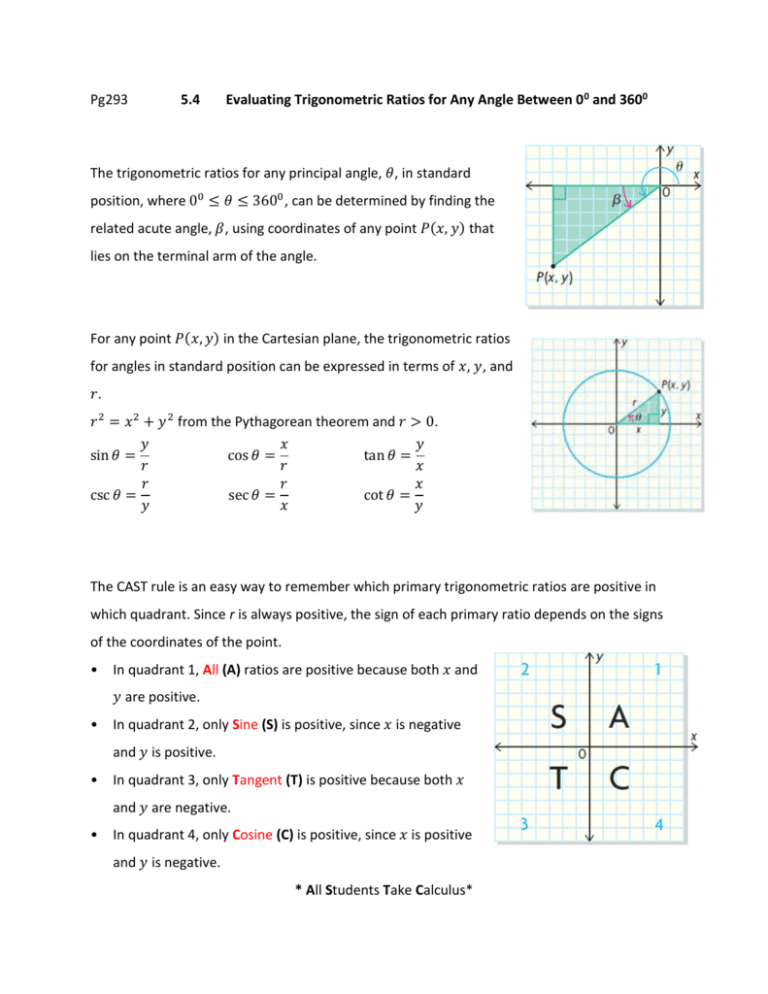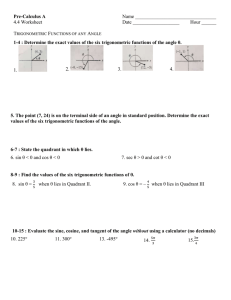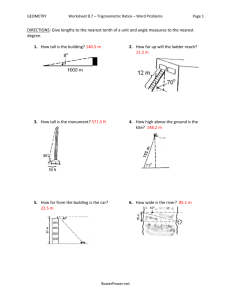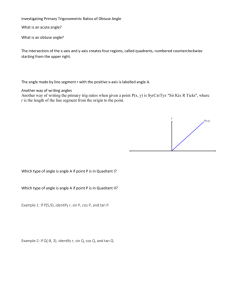Trigonometric Ratios: 0 to 360 Degrees, CAST Rule
advertisement

Pg293 5.4 Evaluating Trigonometric Ratios for Any Angle Between 0 0 and 3600 The trigonometric ratios for any principal angle, 𝜃, in standard position, where 00 ≤ 𝜃 ≤ 3600 , can be determined by finding the related acute angle, 𝛽, using coordinates of any point 𝑃(𝑥, 𝑦) that lies on the terminal arm of the angle. For any point 𝑃(𝑥, 𝑦) in the Cartesian plane, the trigonometric ratios for angles in standard position can be expressed in terms of 𝑥, 𝑦, and 𝑟. 𝑟 2 = 𝑥 2 + 𝑦 2 from the Pythagorean theorem and 𝑟 > 0. 𝑦 𝑥 𝑦 sin 𝜃 = cos 𝜃 = tan 𝜃 = 𝑟 𝑟 𝑥 𝑟 𝑟 𝑥 csc 𝜃 = sec 𝜃 = cot 𝜃 = 𝑦 𝑥 𝑦 The CAST rule is an easy way to remember which primary trigonometric ratios are positive in which quadrant. Since r is always positive, the sign of each primary ratio depends on the signs of the coordinates of the point. • In quadrant 1, All (A) ratios are positive because both 𝑥 and 𝑦 are positive. • In quadrant 2, only Sine (S) is positive, since 𝑥 is negative and 𝑦 is positive. • In quadrant 3, only Tangent (T) is positive because both 𝑥 and 𝑦 are negative. • In quadrant 4, only Cosine (C) is positive, since 𝑥 is positive and 𝑦 is negative. * All Students Take Calculus* Example 1 a) If Miriam chooses the point 𝑃(−3, 4) on the circumference of the circle, determine the primary trigonometric ratios for the principal angle to the nearest hundredth. b) Determine the principal angle to the nearest degree. Example 2 Use the point 𝑃(0, 1) to determine the values of sine, cosine, and tangent for 900. Example 3 Determine the value of 𝜃 if csc 𝜃 = − Homework Pg301 #10~13 2√3 3 and 0 ≤ 𝜃 ≤ 3600 .











